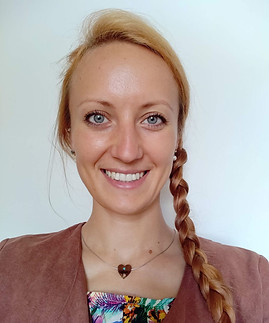Meet the team

Sarah Bowling
Principal Investigator
Sarah joined Stanford as an Assistant Professor in the Developmental Biology Department in 2024. She carried out her PhD at Imperial College London, where she focused on understanding the mechanisms and roles of cell competition during early mammalian development. For her postdoctoral research, Sarah moved to Boston Children's Hospital and the Harvard Department of Stem Cell and Regenerative Biology. Here, she co-developed new lineage tracing mouse models that enable the simultaneous tracing of thousands of cells in vivo with unique, transcribed cellular barcodes. Sarah is excited to combine next-generation tools with fundamental questions in developmental biology to gain a better understanding of how tissues develop. Outside the lab, she can be found singing, hiking, and avoiding bowling (the game) at all costs.

Marine Secchi
Postdoc
Marine joined the Bowling lab as a postdoc in 2024. She did her undergraduate at Imperial College London with a placement at GSK followed by a PhD (also at Imperial College London!) in the labs of Prof. Cristina Lo Celso and Dr. Tiago Luis doing intravital microscopy of platelet biased haematopoietic stem cells. She spent the fall of 2022 developing her image analysis skills at the Broad Institute with Dr Beth Cimini (part of the team behind the open source image analysis software CellProfiler). She is from Aix-en-Provence in South of France. She loves going for a swim in the Stanford outdoor pool in the morning and running/ cycling around as well as crafty activities.

Peter Martin
Graduate student
Peter is a PhD student in the department of Developmental Biology. He began his undergraduate degree at City College of San Francisco and then transferred to San Francisco State University (SFSU). After graduating from SFSU, he joined the lab of Licia Selleri at University of California, San Francisco (UCSF), where his research focused on characterizing novel gene candidates related to orofacial clefts, and understanding the role of ESCRT machinery in craniofacial morphogenesis. He is from South San Francisco, California. In his free time, he enjoys lounging with his cats and trying new restaurants.

Rachel Wyetzner
Graduate rotation student - Fall 2024
Rachel is a PhD student in the department of Developmental Biology. She is from Metuchen, New Jersey. She earned her undergraduate degree from Case Western Reserve University. There, she worked in the lab of Radhika Atit, focusing on the role of extracellular matrix in skin and craniofacial development and disease. After graduating, Rachel joined Mustafa Khokha’s lab at Yale School of Medicine, where she studied the mechanisms of candidate genes involved in a congenital left-right patterning disorder. In her free time, she enjoys building with legos, swimming, and doing puzzles.

Izabela Kowalczyk
Postdoc
Iza studied at Wroclaw University of Science and Technology in Poland. During her Masters, as a finalist of VRGTP/BioLAB Program, she spent one year in the laboratory of David Wotton at the University of Virginia, where she characterized transcription factors relevant for early embryogenesis and glioblastoma. She pursued a PhD in Annette Hammes’ lab at Max Delbrueck Center in Berlin, exploring various aspects of cell and tissue shape changes during early forebrain development. Her work led to the identification of novel players in primary cilia biology and the SHH pathway, and contributed new insights into the penetrance of holoprosencephaly in mice. As a postdoc, she is fascinated by resilience mechanisms in development. Outside the lab, she enjoys dancing, bike-packing trips, and year-round hiking.

Erica Liu
Undergraduate researcher
Erica is an undergraduate at Stanford University studying computational biology on a pre-med track. In her past biology research experience, Erica cultured bacteria to remove pharmaceuticals and personal care products (PPCP) from a local drinking water source. She also has computational research experience, evaluating LLM bias in generative AI-drafted email response templates to patient messages, which is widely used throughout various hospitals. She is from Cleveland, OH. Outside of the lab, Erica enjoys cooking, traveling, and watching sunsets.

Adriana Bibo
Graduate rotation student - summer 2025
Adriana is a graduate student in Developmental Biology. She fell in love with science while studying neurodevelopment in Nichole Link's lab at the University of Utah. After completing her bachelor's degree in psychology, Adriana moved to UCSF with John Vaughen to open the Membrain Lab. In addition to research, Adriana's passions are lifting weights, cuddling with cats, and chasing sunshine.

Nadine Ngo
Undergraduate researcher
Nadine joined the Bowling Lab as an intern through the Stanford CCOP-CORE program. She is currently a rising second-year student at Mission College from Santa Clara, CA, and plans to transfer to a 4-year university to study neurobiology on the pre-med track. Nadine is passionate about understanding how disruptions in early development affect heart function and long-term health outcomes at the cellular level. Her interest in medicine and research stems from both hands-on caregiving experiences at her local nursing home, leading high-pressure emergencies as a lifeguard manager, and a love for dissections. When not in the lab, she's likely experimenting with new matcha recipes, hiking coastal trails, and exploring thrift stores in new cities.
